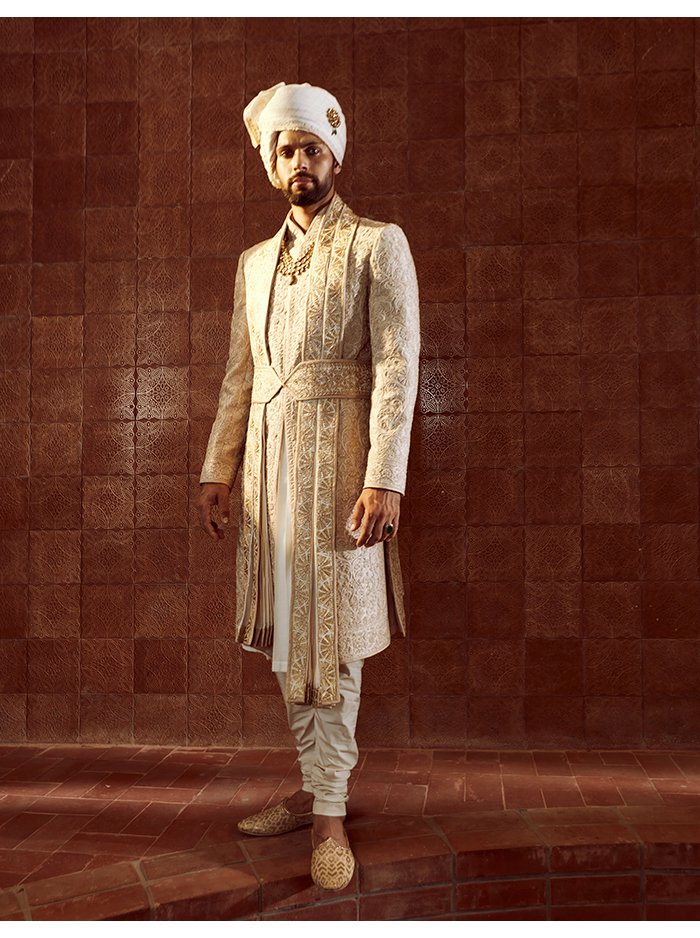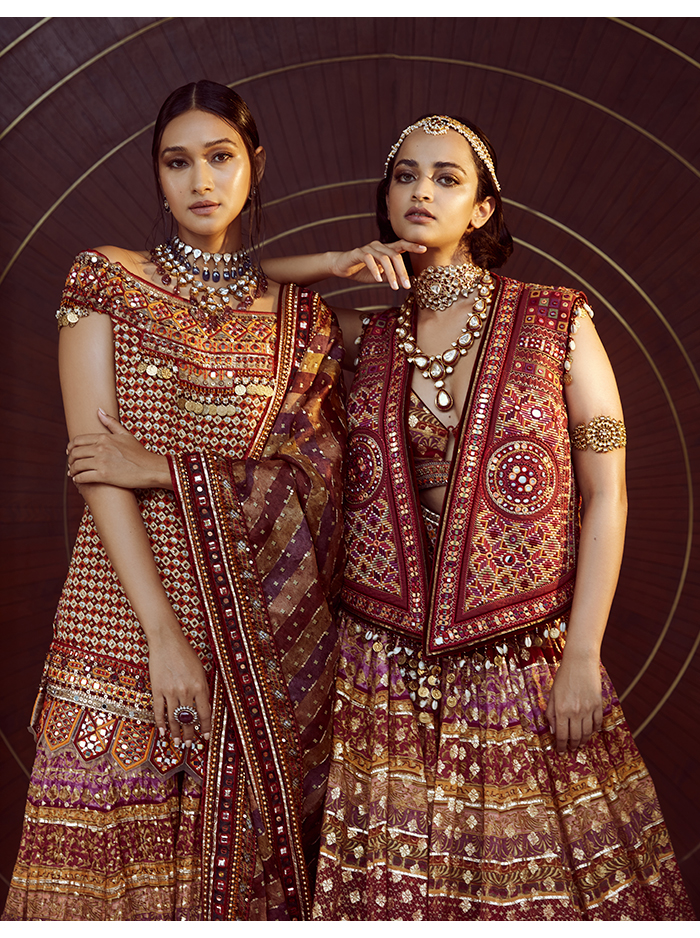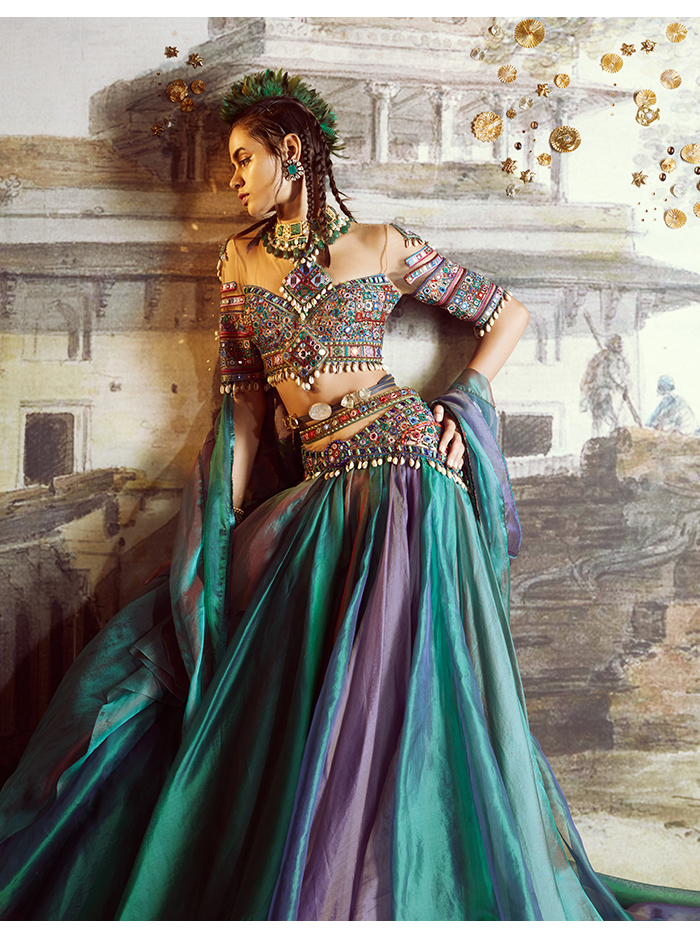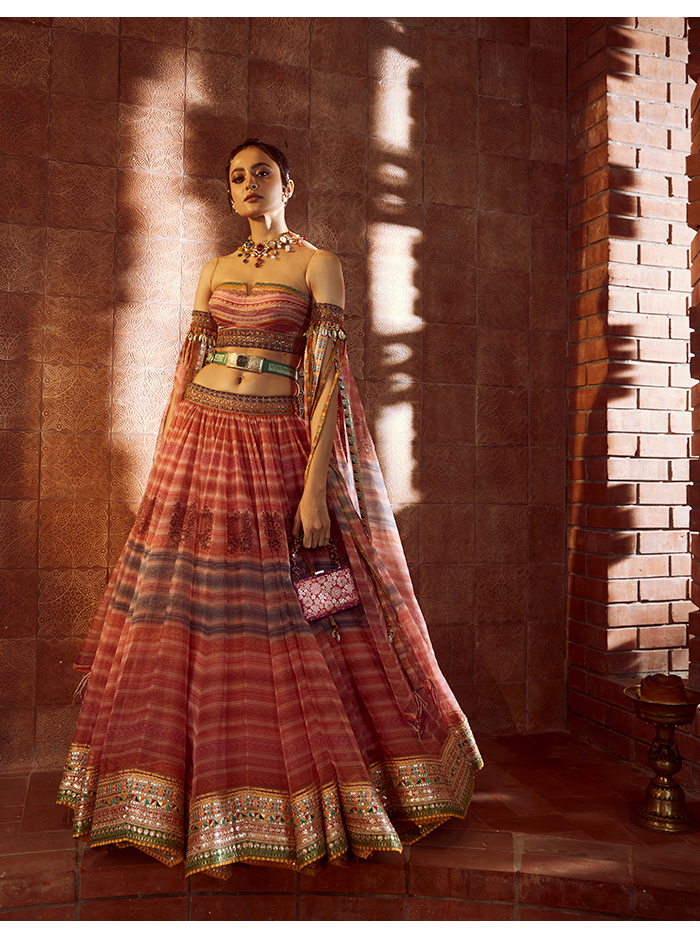Coveted designer Tarun Tahiliani is known for his bridal couture in muted hues, each enhanced with time-honoured crafts. His designs create the image of modern India where our heritage drapes and artistry meets the present. Juxtaposing modern sartorial prowess with the intricacies of Indian technique with skill define his creations.
Earlier in the year, the designer presented his bridal couture collection at the FDCI India Couture Week’s digital edition. For the FDCI x Lakmé Fashion Week 2021, he is showcasing his second range, ‘The Reunion’. Ahead of his first physical show at Mumbai since the pandemic, we caught up with Tahiliani for an exclusive interview about his new collection.
Tell us about your new collection and the inspiration behind it.
This year, we have done two very comprehensive kinds of collections—one was a bridal couture collection which was launched for the digital India Couture Week. What we are showing now at FDCI x Lakmé Fashion Week is the fashion part of the collection that is a mix of silhouettes that anyone can wear. There's the temple motifs based on images I have from the temple in Badrinath. I love tribal references, traditional mirrors, multicoloured thread—you’ll find all this kachhi work based on a lot of beautiful textiles. There are big swirls of coloured organzas. It's almost like birds of paradise with a touch of Indian tribal as we've styled it with mohawks and coloured beads and jewel tones.
I love colour, but when it's fully embroidered I find it too much. Pale or monochromatic to my eye looks better. The menswear typically bounces off this. We've done beautiful brocade both for saris for women and sherwanis. You have many different tones of everything and therefore you have a lot of colour blocking but it's not colour blocking, they're all merging one into the other. It's a lot of fun, it's a lot of young stuff. The collection includes trousers, printed trousers layered with a skirt, bra tops, bustiers, corsets and bodysuit tops worn with big hip yolks. You will also find a lot of structured draping.

What makes this collection unique?
I've always loved colour and we've grown up seeing these rabari women. We've done a lot of that kind of embroidery but finer using new fabric techniques that are soft. But we don't use big mirrors so it's not this hard thing on your body. They've been made into these corsets that are key holed, sexy and strappy with Italian tulle on top so it looks totally like your skin but you can place things on them. It's very funky, very Indian yet very modern, it's something you could wear to a beachside sangeet and then you come back and put on denim colour shorts with the top. It'll look very cool and dressed up. I like fashion like that where you can mix and match things, and therefore individualize them and personalize them. Everyone combines Western wear clothing and it's time for Indian fashion to move in that direction too. For the next fashion collection, we're doing next year everything will be sold as separates and you can make your own looks. It will be done in a colour palette. People will buy things of better quality and that is more sustainable.

What was the starting point when creating The Reunion collection?
All great societies and ecosystems are co-dependent. One of the things we've done very consciously this time is to try and keep things much more artisans. It was horrific last year, and we were helping NGO Dastkar and a few others. We got the brocade paatis woven and we're appliqueing it on. Our factory is back to full capacity now and that was my priority. I was making everything way more labour intensive. I was doing away with machines and so much printing to keep it really special. These are the communities we designers are so dependent on and what is Indian fashion design without the crafts community? Nothing right.
It's handwoven, its handloom, its beautiful printing, embroidery for sure so that's been my one big overriding concern and it's made their lives so much better. It's been amazing how this confluence of ideas and creativity has funnelled and fuelled. So over every agenda of mine is to fuel the craft people and we are now trying to do chikan in 4-5 centres.

How did your fashion film for the digital show come to be?
The idea of doing a film in gardens and forts is not my vibe at all, so we called it ‘The Reunion’ and had girls running over hills almost like it's a Thomas Hardy novel. And then it almost comes down as a party where there are 78-year old people and young people—it's fantastic fun. It's almost like a party and that's how we do party. We have got that vibe into the film and we are pleased about that. We wanted to try something new, we can't always be doing the same old serious thing.

What was it like to plan a physical show again after so long?
This year we had the luxury of time to sit in the atelier and supervise things rather than be on the fly all the time. It's made a huge difference to the quality and it impacts the way it will be worn. Planning the show was a nightmare because there was a rule for everything. But with a 30-foot-high ceiling, the lighting had to be fantastic. It was all new and exciting. We showed some of the couture, some of the bridal, we mixed pieces from the collections because seeing it live is seeing it live. This is also the first time FDCI x Lakmé came together, and I've been pushing for that for 7-8 years. To move 88 pieces including shoes, headgears and jewels is like a nightmare. But we did this because I believed in it. It is the worst thing for designers to have 2 and 3 fashion weeks and then you press our fatigue and no one knows what to take seriously. It's so much better when it comes. There's so much excitement and so much energy. So I'm fully in support of this.
What will the new wedding season look like?
We started styling brides on Zoom those who lived abroad and in other cities of India. We would courier swatches for them to see and try and sometimes we'd even do fittings online. It freed a lot of people who would have been stressed for their 2,000-3,000 people wedding in a stadium or ballroom. Since people were so laidback about their wedding, I thought they'd wear simpler clothes but that wasn't true. They still wanted to go through the whole experience. But they wanted finer and more beautiful things because they weren't under pressure to stand and glitter in a ballroom full of people.